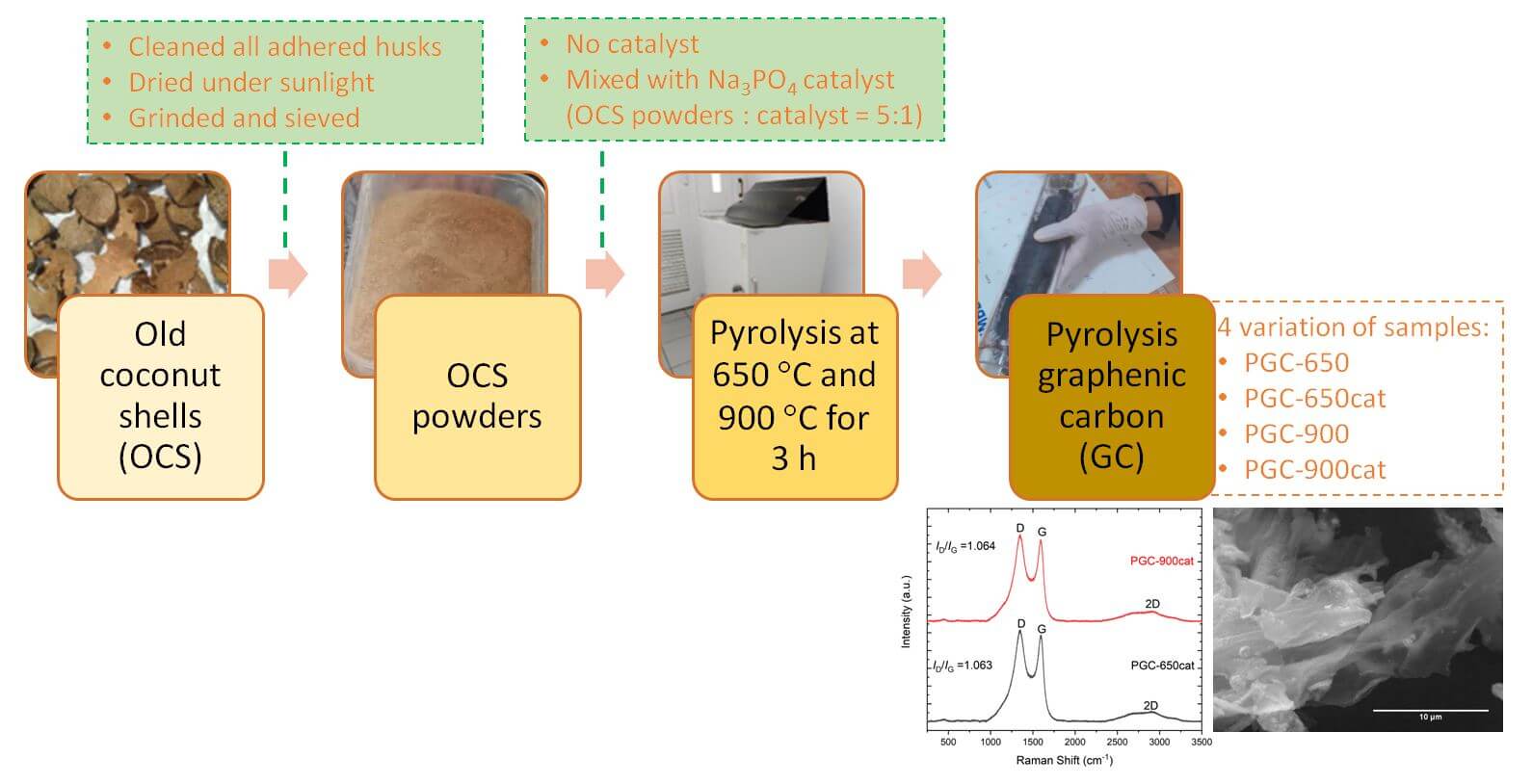 Open Access
Open Access
ARTICLE
Retno Asih1,*, Haniffudin Nurdiansah2, Mochamad Zainuri1, Deni S. Khaerudini3,4, Angelinus T. Setiawan4, A. Y. Dias4, Pudji Untoro4,5, Ahmad Sholih1, Darminto1,*
1 Department of Physics, Institut Teknologi Sepuluh Nopember, Surabaya, 60111, Indonesia
2 Department of Material and Metallurgical Engineering, Institut Teknologi Sepuluh Nopember, Surabaya, 60111, Indonesia
3 Research Centre for Advanced Materials, National Research and Innovation Agency (BRIN), Tangerang Selatan, 15314, Indonesia
4 PT. Graphene Nanomaterial Consulting, Malang, 65141, Indonesia
5 Department of Physical Engineering, Surya University, Banten, 15143, Indonesia
* Corresponding Author: Retno Asih. Email: ; Darminto. Email:
(This article belongs to the Special Issue: Special Issue in Celebration of JRM 10 Years)
Journal of Renewable Materials https://doi.org/10.32604/jrm.2024.049097
Received 27 December 2023; Accepted 20 February 2024; Published online 03 April 2024

View
Download
Like
Floristic associations and filtering ability of riparian vegetation strips
Giaccio GCM, P Laterra, F Cabria